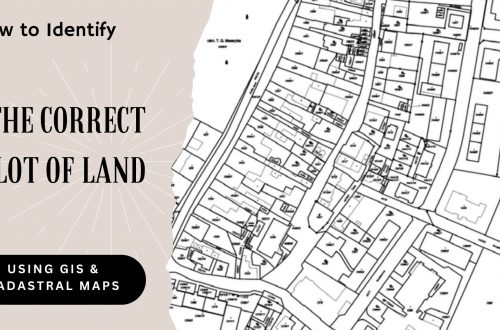
Why Mining and Manufacturing Companies Need a Unified Land Management Platform
In the mining and manufacturing sectors, land is not just a resource—it’s a strategic foundation. From mineral exploration to industrial expansion, every project starts with identifying, acquiring, and managing vast stretches of land. Yet, land administration remains one of the most complex, time-consuming, and risk-prone parts of project development.
Fragmented records, manual processes, and disconnected systems often lead to delays, disputes, and compliance issues. To overcome these challenges, leading organizations are adopting all-in-one digital Land Management Platforms like LAMS — a GIS-enabled, cloud-based solution purpose-built for managing large, distributed land assets efficiently.
1. Managing Complex Land Portfolios
Mining and manufacturing operations typically span multiple leases, permits, and zones, often across different administrative jurisdictions.
Challenge: Keeping track of each parcel’s ownership, boundary, renewal date, and associated permits manually is error-prone.
Solution: LAMS, as a modern Land Management Software, consolidates all land parcels into one central digital database with both spatial (map-based) and non-spatial details.
Impact: Teams can visualize, track, and manage thousands of leases or plots in real-time through a unified dashboard.
2. Efficient Land Acquisition and Expansion Planning
Mining and manufacturing companies continually acquire land for new pits, plants, or logistics facilities.
The Land Acquisition and Management System module streamlines every stage—site identification, ownership verification, compliance tracking, compensation, and registration.
Impact: Reduces acquisition time by digitizing workflows and providing instant access to updated cadastral and ownership records.
Result: Faster project initiation, fewer legal complications, and transparent land transactions.
3. GIS-Based Monitoring for Spatial Accuracy
For mining especially, spatial accuracy is critical. Operations depend on clear delineation of exploration zones, mining leases, safety buffers, and adjoining settlements.
LAMS Advantage: A GIS-based Land Management System integrates high-resolution base maps, drone imagery, and cadastral data to maintain spatial precision.
Impact: Ensures regulatory compliance with mining boundaries and supports operational safety.
4. Streamlined Lease and Tenure Management
Both industries deal with multiple lease types—mining leases, industrial land leases, or right-of-way agreements. Managing renewals, payments, and conditions manually can cause compliance lapses.
In LAMS: The Land Lease Management module tracks lease start and expiry dates, rent schedules, and alerts for renewals or pending approvals. LAMS can be integrated with existing ERP system to track and manage the payment process seamlessly.
Impact: Ensures no lease lapses unnoticed, improving legal compliance and operational continuity.
5. Integrated Compliance and Regulatory Readiness
Mining and industrial projects face strict environmental, land-use, and zoning regulations. Compliance audits are frequent and documentation must be readily available.
In LAMS: Each parcel’s compliance documents—licenses, clearances, and environmental reports—are stored securely within the system and linked to its geographic footprint.
Impact: Easy retrieval during audits and automatic reminders for renewals or submissions, preventing fines or project stoppages.
6. Transparency and Stakeholder Collaboration
Large-scale mining or manufacturing projects often involve multiple stakeholders—landowners, contractors, regulators, and internal teams.
LAMS provides: Controlled, role-based access, so each stakeholder sees the relevant information without risking data exposure.
Impact: Builds trust, improves internal coordination, and reduces conflicts arising from miscommunication or data silos.
7. Asset Optimization and Long-Term Value Management
Beyond acquisition, effective land asset management helps organizations unlock value from underutilized properties—unused lease areas, buffer zones, or reclaimed land.
In LAMS: The Land Asset Management module provides real-time analytics and utilization tracking.
Impact: Enables informed decisions about asset repurposing, leasing, or divestment, maximizing return on investment.
8. Scalable, Secure, and Cloud-Based Architecture
Mining and manufacturing companies operate across remote regions and global subsidiaries. A cloud-based Land Management System ensures data availability anytime, anywhere.
In LAMS: Data is securely hosted on the client’s IT environment with encryption, backups, and role-based authentication.
Impact: Scalable operations, reduced IT overhead, and business continuity even in remote, high-risk zones.
Conclusion
For mining and manufacturing enterprises, land is both a resource and a responsibility—tied to productivity, compliance, and community impact.
An all-in-one Land Management Platform like LAMS gives these organizations the control, accuracy, and intelligence they need to manage complex land portfolios efficiently.
By combining GIS-based mapping, land acquisition workflows, lease management, and regulatory compliance in one platform, LAMS transforms land administration from a reactive task into a strategic advantage.
In industries where every project begins and grows from the land, having a digital, cloud-based land management system is not optional—it’s essential for sustainable, compliant, and data-driven growth.

Darshana Mukherjee is a Senior Consultant in Business Development with over 11 years of experience in sales, primarily focused on the Geospatial IT industry. Her expertise lies in driving business growth through strategic partnerships, client engagement, and delivering solutions. She combines her technical knowledge with business acumen to contribute effectively to organizational success.



